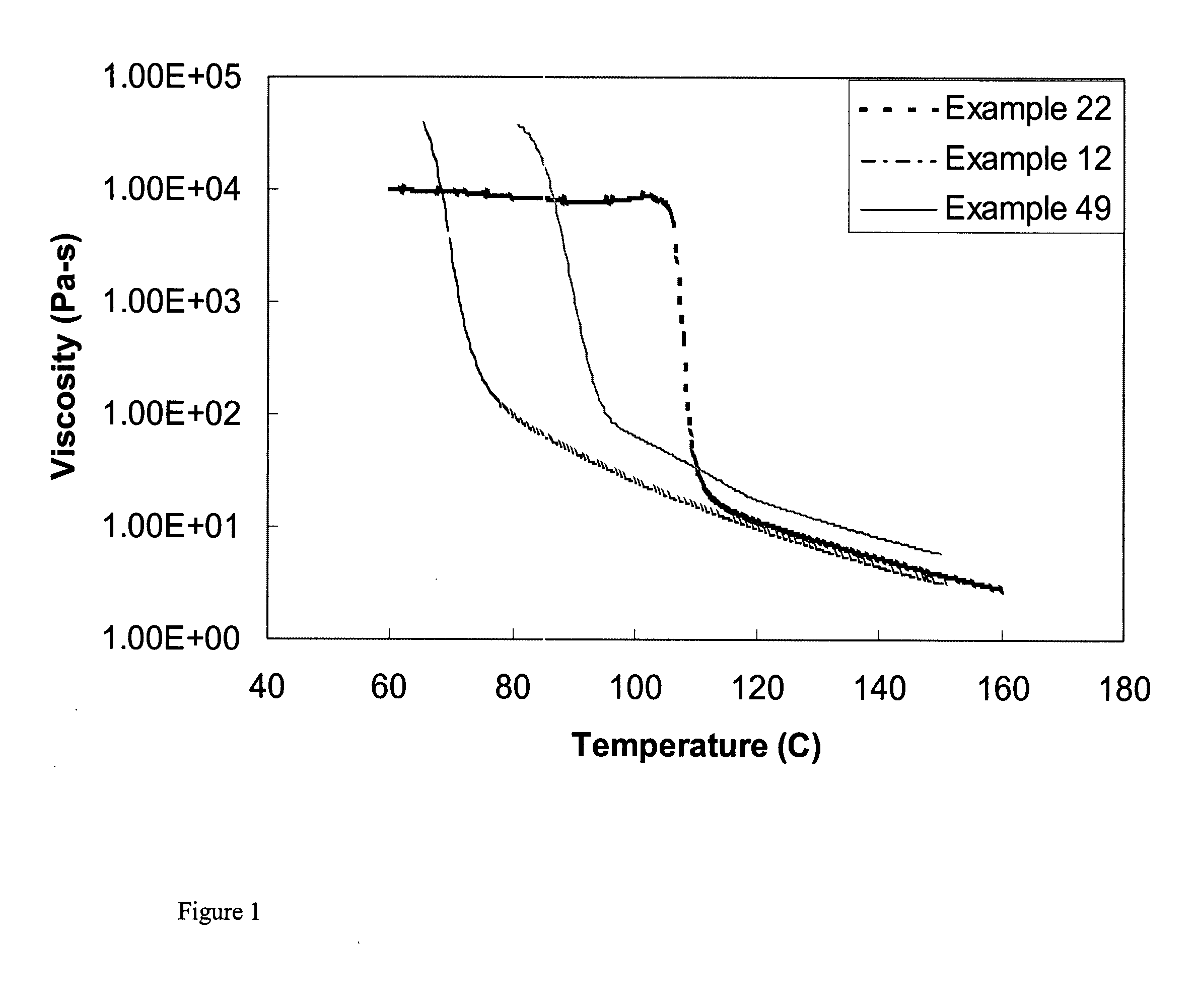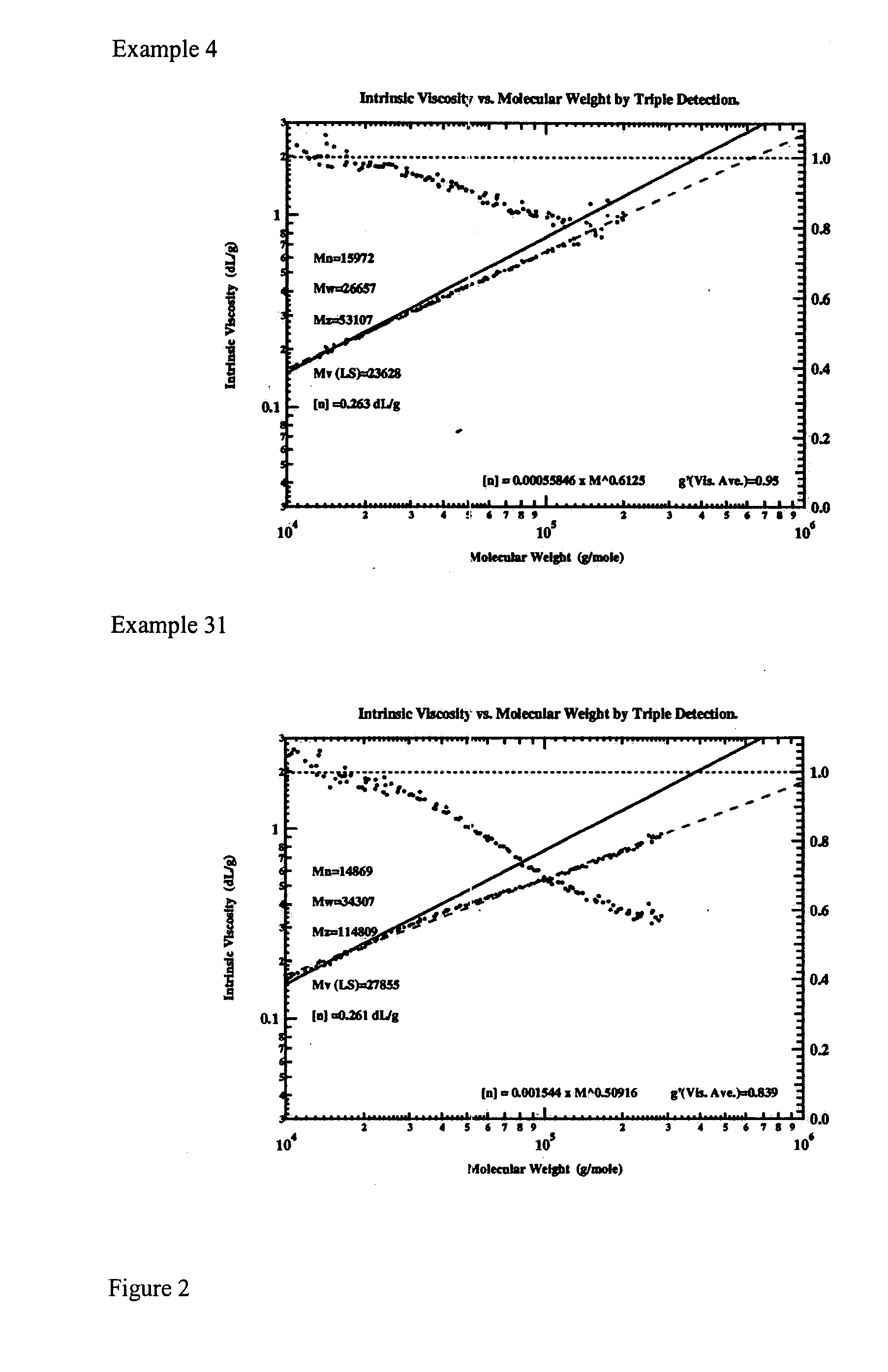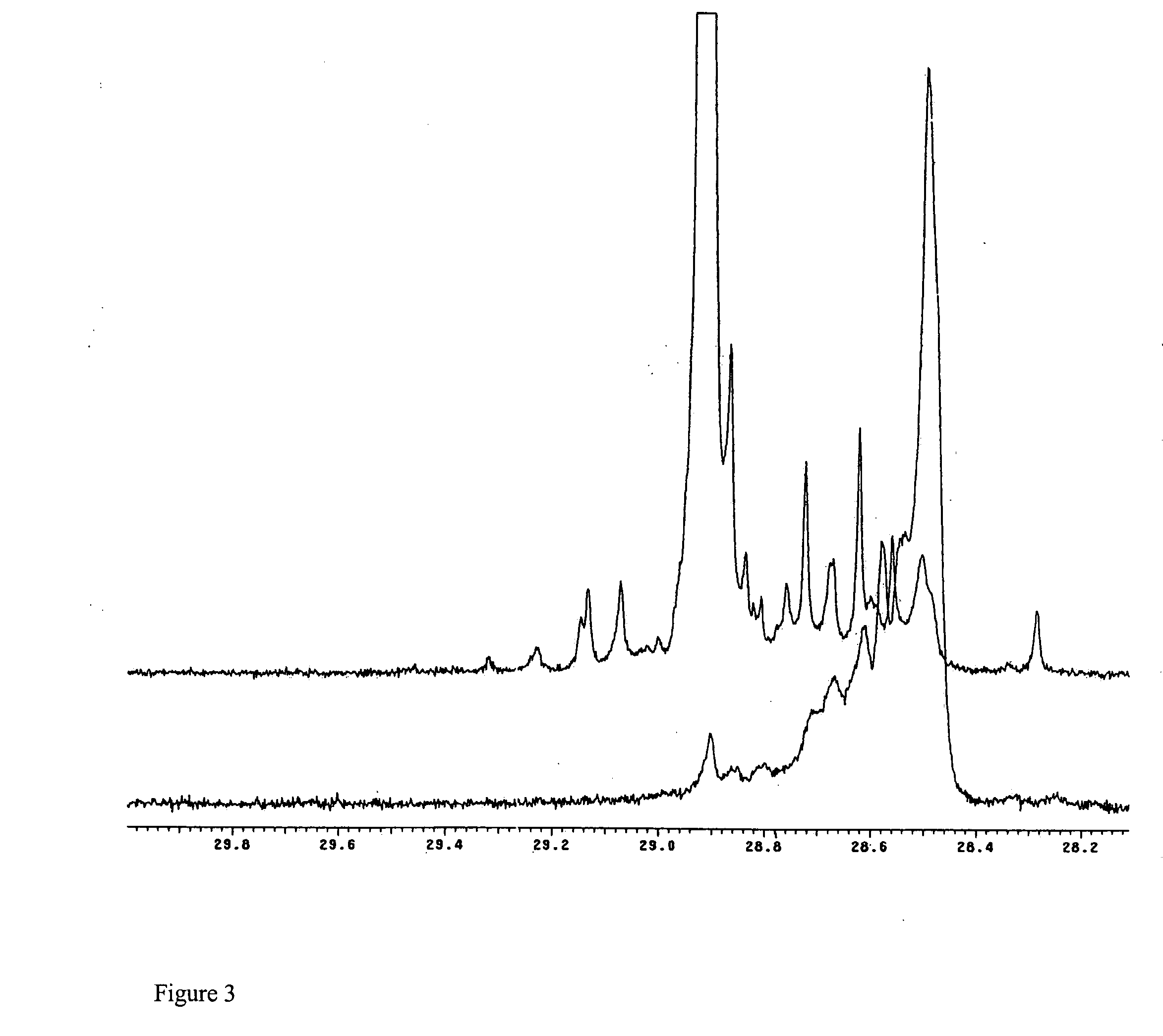Multiple catalyst system for olefin polymerization and polymers produced therefrom
a technology of olefin polymerization and polymerization process, which is applied in the direction of adhesives, film/foil adhesives, adhesive processes, etc., can solve the problems of lack of other physical attributes, difficulty in producing different polymers, and insufficient miscibility of physical blends
- Summary
- Abstract
- Description
- Claims
- Application Information
AI Technical Summary
Benefits of technology
Problems solved by technology
Method used
Image
Examples
examples
General
[1122] All polymerizations were performed in a liquid filled, single-stage continuous reactor using mixed metallocene catalyst systems. The reactor was a 0.5-liter stainless steel autoclave reactor and was equipped with a stirrer, a water cooling / steam heating element with a temperature controller, and a pressure controller. Solvents, propylene, and comonomers (such as butene and hexene), if present, were first purified by passing through a three-column purification system. The purification system consists of an Oxiclear column (Model # RGP-R1-500 from Labclear) followed by a 5A and a 3A molecular sieve columns. Purification columns were regenerated periodically whenever there is evidence of lower activity of polymerization. Both the 3′A and 5A molecular sieve columns were regenerated in-house under nitrogen at a set temperature of 260° C. and 315° C., respectively. The molecular sieve material was purchased from Aldrich. Oxiclear column was regenerated in the original manuf...
examples 1-4
[1132] Four samples were made with rac-dimethylsilylbis(2-methyl-4-phenylindenyl)zirconium dimethyl and dimethylsilyl(tetramethylcyclopentadienyl) (cyclododecylamido)titanium dimethyl at a temperature 115° C. over a range of catalyst ratios. The polymerization reactions followed the general procedure described above. The detailed experimental conditions and results are presented in Table 1.
TABLE 1Example1234Catalyst #1AAAACatalyst #1 feed rate4.83E−063.66E−063.00E−062.68E−06(mole / min)Catalyst #2BBBBCatalyst #2 feed rate3.64E−073.64E−073.64E−073.64E−07(mole / min)Propylene feed rate14141414(g / min)Hexane feed rate90909090(ml / min)Polymerization temp115115115115(° C.)Mn (kg / mol)19.118.216.416.9Mw (kg / mol)3128.325.726.7Mz (kg / mol)66.152.446.953.1g′ @ Mz1.020.990.960.9Tc (° C.)90.598.897.797.1Tm (° C.)140.5143.2143.8142.8Tg (° C.)−17.7−10.4−10.4−11.3Heat of fusion (J / g)21.725.734.735.1Viscosity @190° C.154013401240798(cps)Conversion (%)95.389.687.192.8Catalyst activity5.76.98.09.4(kg poly...
examples 5-8
[1133] Four samples were made with rac-dimethylsilylbis(2-methyl-4-phenylindenyl)zirconium dimethyl and dimethylsilyl(tetramethylcyclopentadienyl)(t-butylamido)titanium dimethyl at a temperature of 100° C. over a range of catalyst ratio. The polymerization reactions followed the general procedure described above. The detailed experimental conditions and results are presented in Table 2.
TABLE 2Example5678Catalyst #1FFFFCatalyst #1 feed rate4.92E−064.92E−064.92E−064.92E−06(mole / min)Catalyst #2BBBBCatalyst #2 feed rate5.67E−078.50E−071.13E−061.42E−06(mole / min)Propylene feed rate14141414(g / min)Hexane feed rate90909090(ml / min)Polymerization100100100100temperature (° C.)Mn (kg / mol)12.111.98.812.4Mw (kg / mol)29.430.726.328Mz (kg / mol)84.381.680.784.7g′ @ Mz0.930.880.870.84Tc (° C.)95.898.496.195.8Tm (° C.)145.2145.7143.3143.0Tg (° C.)−9.6−10.4−11.1−10.0Heat of fusion (J / g)21.432.430.033.0Viscosity @190° C.11001040840675(cps)Conversion (%)88.6391.7368.0977.23Catalyst activity6.386.084.184.4...
PUM
| Property | Measurement | Unit |
|---|---|---|
| mol % | aaaaa | aaaaa |
| melt viscosity | aaaaa | aaaaa |
| melt viscosity | aaaaa | aaaaa |
Abstract
Description
Claims
Application Information
 Login to View More
Login to View More - R&D
- Intellectual Property
- Life Sciences
- Materials
- Tech Scout
- Unparalleled Data Quality
- Higher Quality Content
- 60% Fewer Hallucinations
Browse by: Latest US Patents, China's latest patents, Technical Efficacy Thesaurus, Application Domain, Technology Topic, Popular Technical Reports.
© 2025 PatSnap. All rights reserved.Legal|Privacy policy|Modern Slavery Act Transparency Statement|Sitemap|About US| Contact US: help@patsnap.com



